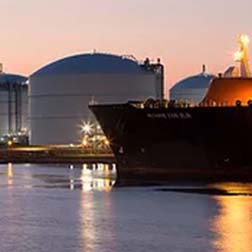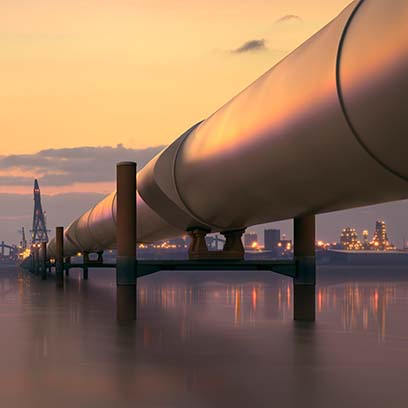Will we get enough LNG this winter ?
There seems to be a general feeling in this country that the panic in the market in 2021 and 2022 is now over and gas security of supply is assured for this winter. For example, National Gas said in their Winter Outlook 2023/24. “We have sufficient capability to meet peak demand …”. However this sunny outlook is dependant in the arrival of significant volumes of LNG. The Winter Outlook estimates that 27% of gas supply in winter 23/24 will be LNG. Unfortunately, arrival of these volumes is not guaranteed.
Almost uniquely amongst major LNG importers worldwide, the UK has almost no long term firm contracts, which guarantee the arrival of cargoes. We are almost entirely dependent on the Spot Market for our supplies. This poses two problems.
The World LNG market is relatively small compared to the Crude Oil market (Crude is 7 times bigger). As a result the LNG spot market is very volatile and prone to massive spikes and troughs. Between 2020 and 2022, the JKM LNG spot price in the Far East dropped to a low of $2/mmbtu in May/June 2020 but then rose to an all-time peak of $53/mmbtu in August 2022. Earlier this year the possible threat of strikes at some of the Australian LNG export plants led to surge in LNG, and gas, prices in in Q3. It doesn’t take much in the way of market shifts to see a massive surge in LNG prices which would be very costly for UK gas consumers.
Perhaps even more seriously, there is no guarantee that LNG cargoes will arrive in the UK at all, if prices are not high enough. Exporters of spot LNG cargoes have a choice between selling to markets in Europe , such as the UK and to the main LNG markets in Asia such as Japan, China and Korea.
The cargo destination will be determined by relative prices. The economics vary from day to day but are driven by four key factors:-
1. The NBP gas price in the UK, less the cost of entry into the UK pipeline network.
2. The JKM spot price for LNG in the far east.
3. The Dollar Pound Exchange rate; to convert UK prices in p/therm to $/mmbtu.
4. The Day rate for LNG vessels to deliver LNG cargoes from the swing producers, the LNG terminals in the United States, to either the UK or the Far East.
Shipping costs from the Gulf of Mexico to the UK are slightly less than those to the Far East, currently this gross transport differential is around $1.50 /mmbtu, perhaps more like $1.00/mmbtu net after allowance for pipeline entry charges here. So, if UK prices are less than $1/mmbtu below the JKM prices, then cargoes should still continue to arrive in the UK. However, if the price gap opens up beyond that then there is a real danger that UK LNG supply will be significantly reduced, perhaps critically.
Price have shifted around this Autumn but both far east and UK prices have both fallen in recent weeks, but more here than in Japan and China. The table below shows the forward curve prices for the NBP and the JKM market, both in $/mmbtu for the period December 2023 to March 2024.
UK and Far East prices
| Year | Month | NBP p/therm | NBP $/mmbtu | JKM $/mmbtu | JKM premium $/mmbtu |
|---|---|---|---|---|---|
| 2023 | December | 116.31 | 4.53 | 17.08 | 2.55 |
| 2024 | January | 122.15 | 24.24 | 17.10 | 1.86 |
| February | 124.11 | 5.50 | 16.40 | 0.90 | |
| March | 122.21 | 5.26 | 15.50 | 0.24 |
The table shows that the JKM premium over the NBP is well above the critical $1/mmbtu level in December and January and still close to the critical level in February. Although things can shift around in future it does suggest that LNG supply to the UK for much of the Winter is at risk.
Although this analysis has bene done in terms of the UK the conclusions would also broadly apply to the other major gas markets of North West Europe, where winter prices are if anything slightly below those in the UK.





